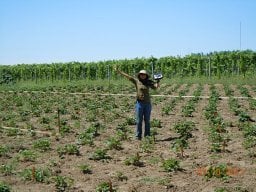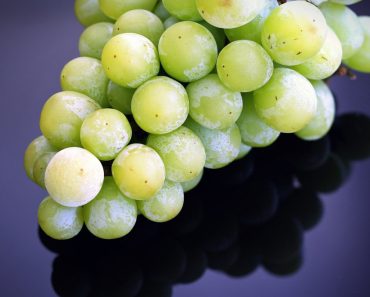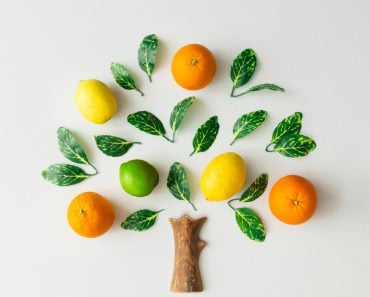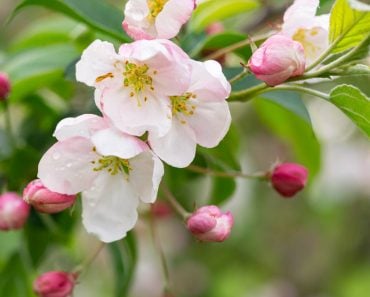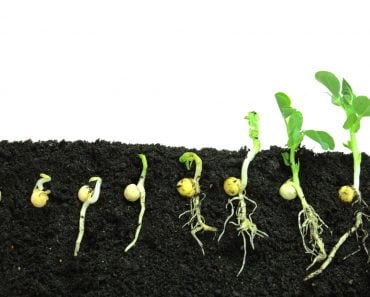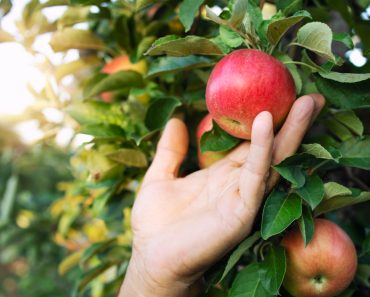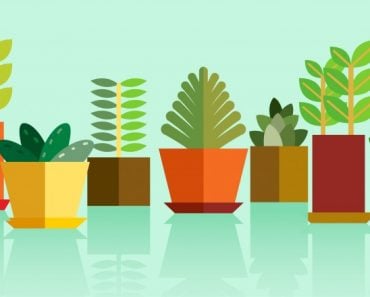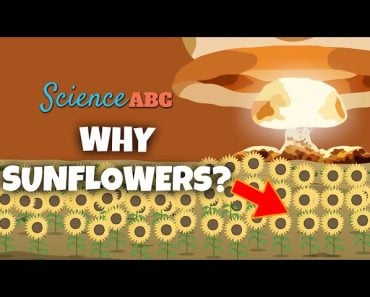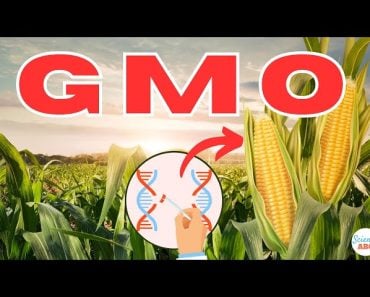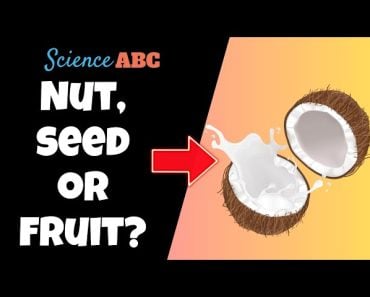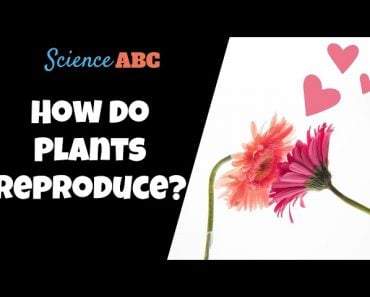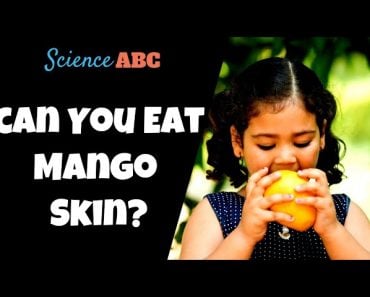Table of Contents (click to expand)
- Are Seedless Watermelons GMOs?
- How Does Watermelon Become Seedless?
- If Seedless Watermelons Are Sterile, How Do They Bear Fruit?
- Seedless Watermelons Do Not Produce Seeds, So How Do We Grow Seedless Watermelon Plants?
- Do Seedless Watermelons Look Any Different From Seeded Watermelons? Are Seedless Watermelons Larger/darker/bigger/redder/sweeter…
- Why Do Seedless Watermelons Have White And Black ‘Seeds’?
- Some Watermelons May Have Large ‘Holes’ Inside
The triploid seedless watermelon is a hybrid created by mating a tetraploid (4x) parent with a diploid (2x) parent. The triploid seeds will grow into a plant, but they are sterile and will not bear fruit by themselves. Seedless watermelons are not GMOs.
Watermelon is a favorite summertime fruit of many people around the world. Typically, the red and juicy flesh of watermelons is full of brown or black seeds. Some people take pleasure in spitting out the seeds, and seed spitting is even a sport in some parts of the world. Others, however, find the seeds annoying and would much rather not be bothered by them at all. Seedless watermelons were likely created for this second, more discerning group.
Although seedless watermelons have existed since 1940, and have been widely available at grocery chains since the 1980s, they continue to pique the interest of consumers. A common confusion arises from the fact that there are no seeds in this fruit. Thus, if a seedless watermelon has no seeds, how do we grow a seedless watermelon plant?
Recommended Video for you:
Are Seedless Watermelons GMOs?
No, seedless watermelons are not “GMOs”. Let’s get that out of the way from the start.
The World Health Organization defines GMO as, “[…] organisms (plants, animals or microorganisms) in which the genetic material (DNA) has been altered in a way that does not occur naturally by mating and/or natural recombination. The technology is often called “modern biotechnology” or “gene technology”, sometimes also “recombinant DNA technology” or “genetic engineering. It allows selected individual genes to be transferred from one organism into another, also between non-related species. Foods produced from or using GM organisms are often referred to as GM foods.“
There is no ‘modern biotechnology’, ‘gene technology’, ‘recombinant DNA technology’, or ‘genetic engineering’ used to produce the seedless watermelons that are commercially available today.
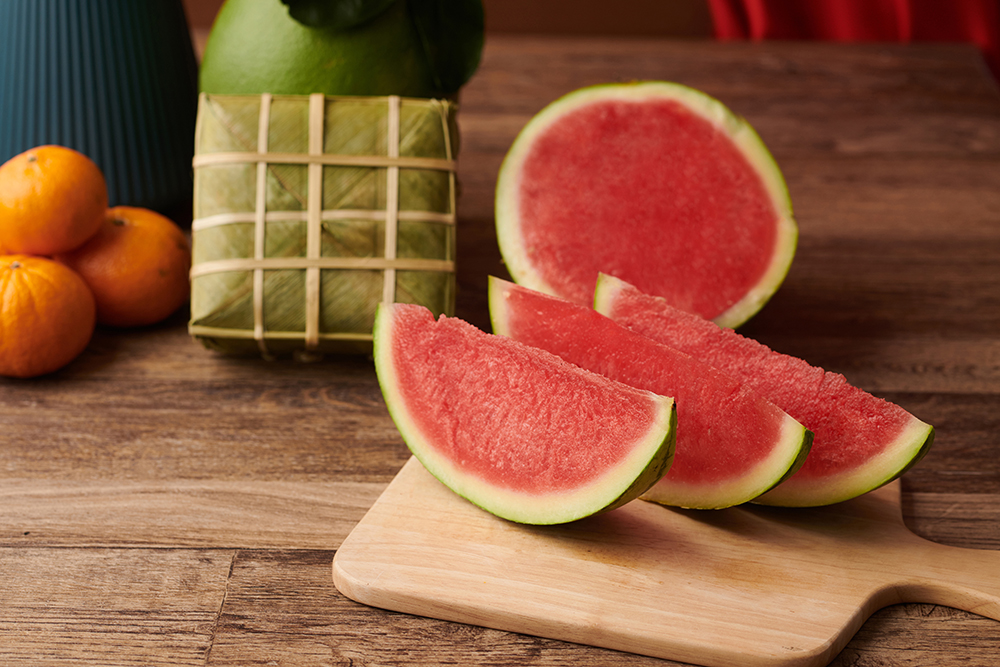
How Does Watermelon Become Seedless?
To understand how seedless watermelons are created, we first need to understand the term ‘ploidy‘.
Ploidy is the number of sets of chromosomes that are present in every cell of an organism, and is referred to as ‘x’ (also sometimes referred to as ‘n’). Humans are diploid (2x) because we have two sets of chromosomes. All standard seeded watermelons are diploid (2x). Seedless watermelons, however, are triploid (3x), as they have three sets of chromosomes.
The triploid seedless watermelon is a hybrid created by mating a tetraploid (4x) parent with a diploid (2x) parent. The tetraploid parent is created by doubling the chromosomes of a diploid watermelon using a chemical called colchicine. The offspring from mating a 4x and a 2x watermelon will have three sets of chromosomes (3x). The triploid seeds will grow into a plant, but they are sterile and will not bear fruit by themselves.
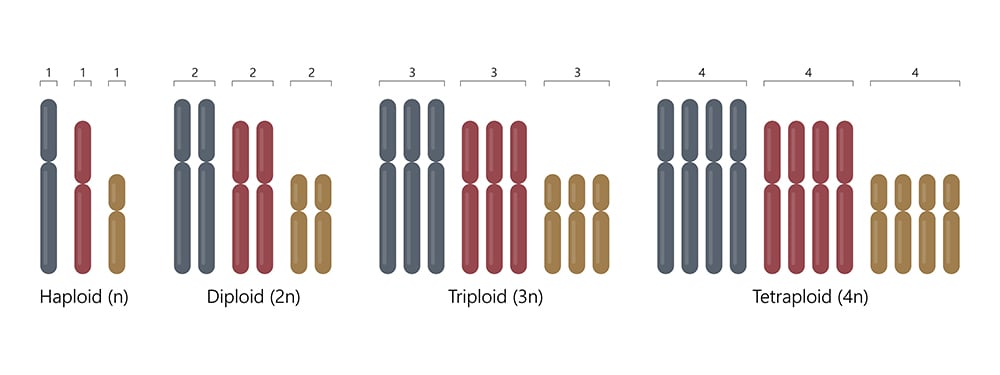
If Seedless Watermelons Are Sterile, How Do They Bear Fruit?
Seedless watermelon varieties are triploid (3x) hybrids, so the male and female gametes produced are sterile. The triploid plants are grown interspersed with a diploid watermelon pollinizer variety. When pollen from the diploid variety pollinates the triploid flowers, they stimulate parthenocarpy (fruit formation without fertilization), which results in the formation of the seedless watermelon fruits.
Depending on the growing region, farmers’ preferences, and market preferences, the diploid parent may be a larger edible seeded watermelon variety, or a diploid variety specifically bred for the sole purpose of supplying pollen to the desired triploid variety.
Usually, the edible varieties planted are the larger elongated ‘Allsweet’ types that can be visually distinguished from the seedless type to help identify the diploids during the harvest.
Some growers prefer to plant a ‘pollinizer variety,’ which has small baseball-sized round fruits and the vines have a shrub-like appearance to take up less space in the field. These pollinizer varieties are bred to have higher pollen content and synchronized flowering times to supply pollen to the triploid plants.
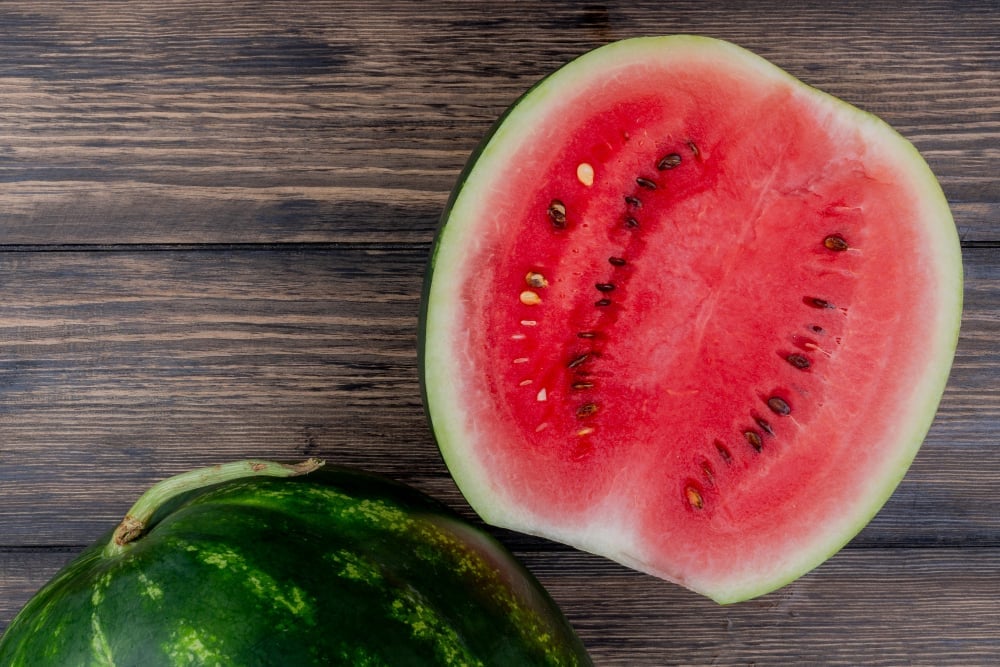
Seedless Watermelons Do Not Produce Seeds, So How Do We Grow Seedless Watermelon Plants?
Seeds for planting triploid seedless watermelon plants are produced by growing the two parental lines (the tetraploid and the diploid) next to each other. Watermelons bear separate male and female flowers. All male flowers of the female parent are manually removed to make sure that the female parent does not pollinate itself.
Small-scale seed production is done by hand pollination. Large-scale seed production is done by growing them in cages or isolation blocks and introducing bees when they are flowering.
Watermelon growers buy these seeds every year to grow their crop.
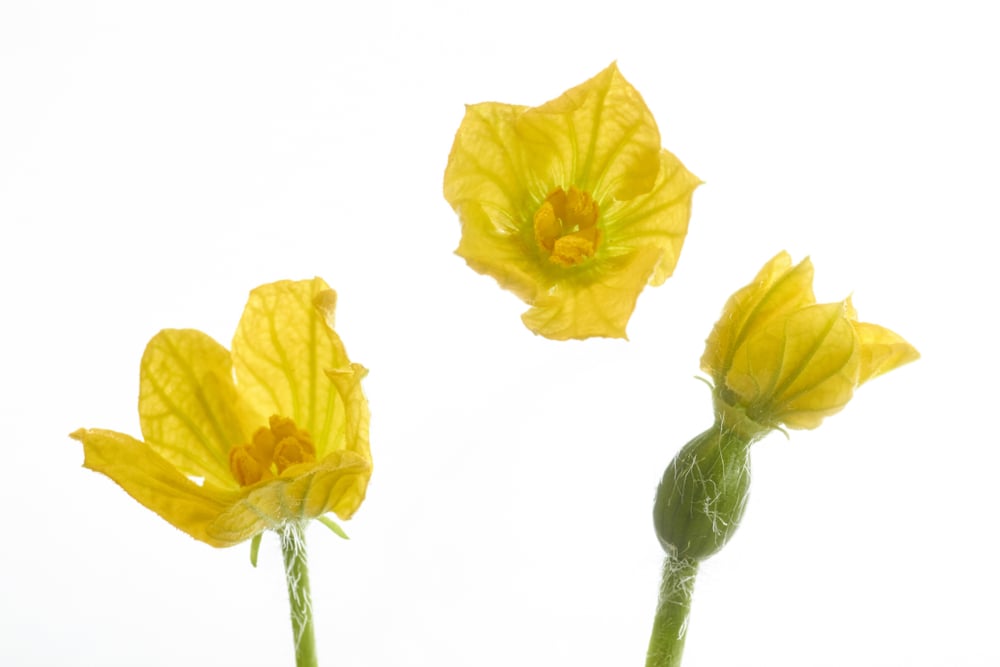
Do Seedless Watermelons Look Any Different From Seeded Watermelons? Are Seedless Watermelons Larger/darker/bigger/redder/sweeter…
Technically, no.
The perceived differences are due to market preferences. Plant breeders in the public and private sector develop varieties based on market preferences. If the seedless varieties in the market have a certain shape or rind color, that is because the market (growers, shippers, retailers) prefer that type. When plant breeders set about to breed new varieties, they will typically have extensive discussions with marketing and sales teams, growers, shippers, and retailers to understand what the market needs, and then use this information to develop varieties according to the specifications.
For example, in the US, a large portion of seedless watermelon types have an oblong shape, with dark green stripes (Crimson Sweet type), and are 18-22 lbs (36 count) or 14-17 lb (45 count) in weight. The size specifications are determined by the retailers who buy the watermelons in large bins designed to hold a specific number of watermelons. If the fruits are larger, retailers prefer to have 36 fruits fit into one bin. If the fruits are smaller, then retailers prefer to have 45 fruits to fit into the bin. Hence the terms 36-count and 45-count.
Now, this does not mean that all seedless watermelons are Crimson Sweet types with the above sizes. Seedless watermelons that are available commercially also include Sugar Baby types (round fruits with dark green rinds) and Jubilee types (round fruits with dark green angular stripes on pale green background). If the flesh color seems darker red, or the flesh appears firmer or sweeter, it means that plant breeders have worked hard to develop varieties that the consumers prefer.
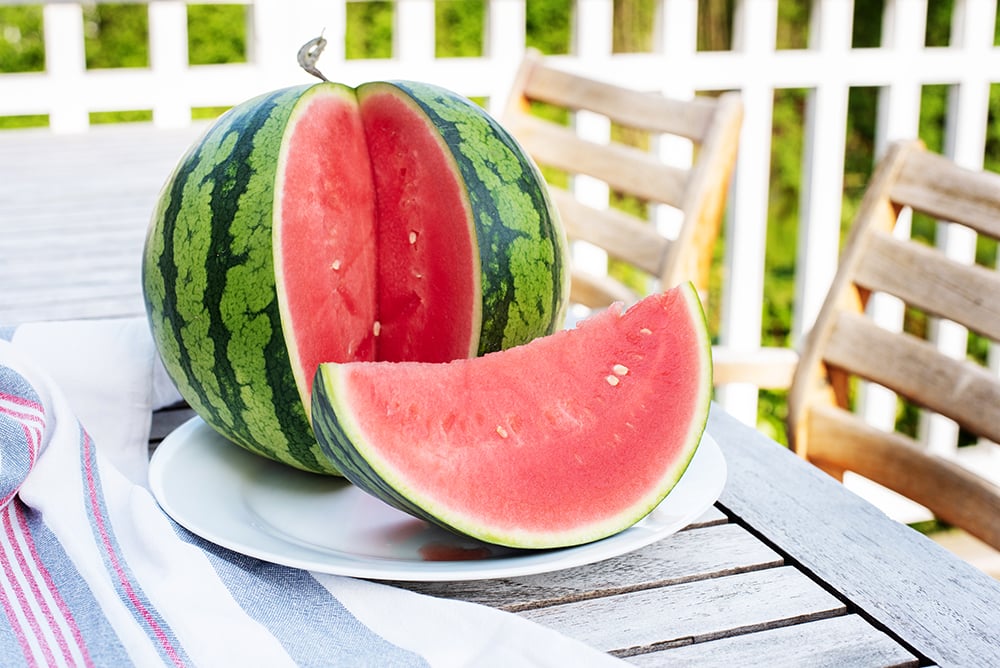
Why Do Seedless Watermelons Have White And Black ‘Seeds’?
Seedless watermelons do not have seeds. The white or black/brown ‘seeds’ are actually hollow shells. The white ‘seeds’ are called ‘pips,’ and they are the seed coats of seeds that did not mature.
In a seeded watermelon, we are likely to find a small percentage of empty seeds, but in a seedless watermelon, you will only find partially developed seed coats. The formation of black or brown seed coats in seedless watermelon is usually a stress response of the plant, and some varieties get more black (empty) seeds under stress than others. This is a characteristic that plant breeders work on improving to develop a variety that is more resilient under stress conditions.
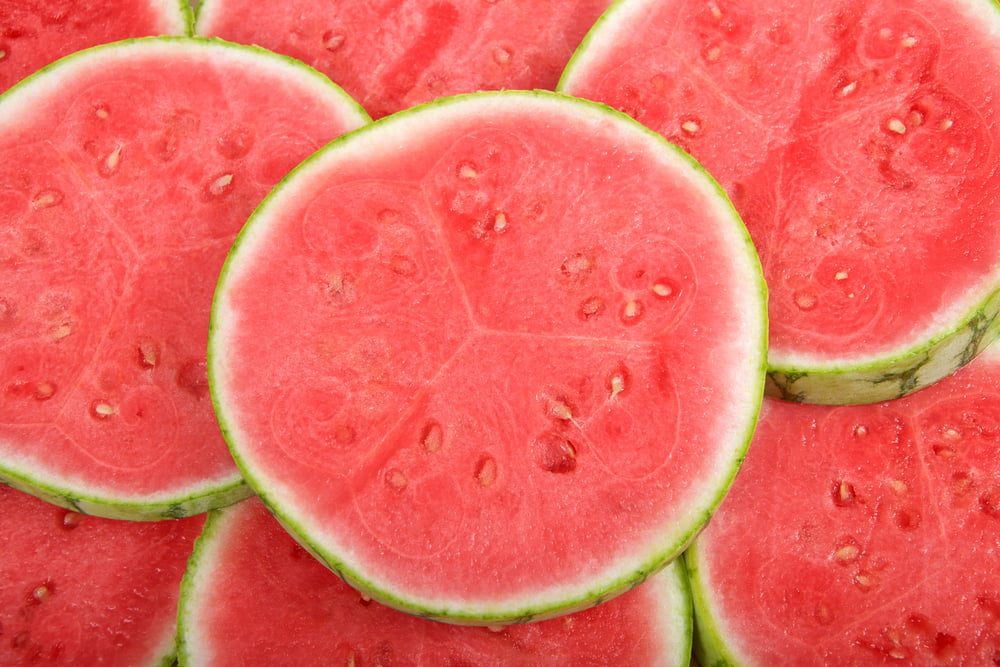
Some Watermelons May Have Large ‘Holes’ Inside
Watermelons are affected by a condition called ‘hollow heart‘, where there are large cracks inside the fruit. It is a complex trait and is affected by multiple conditions, including poor pollination, weather, soil fertility and moisture, and flesh firmness. In addition, some varieties are more prone to hollow heart than others. This is again a trait that scientists and breeders are working to improve, and some of the newer varieties in the market are less prone to the hollow heart condition.
If Seedless Watermelons Are So Awesome, Why Don’t We Find Them Everywhere?
Seedless watermelon availability depends on market demand. It is more common to find seedless watermelons in countries like the USA and Australia, where the market has evolved to prefer seedless types. Mexico and Central American countries grow seedless watermelons to supply the US market. On the other hand, some regions are more traditional and typically associate eating watermelons with spitting out the seeds. Some European countries like Italy, and South American countries like Chile and Brazil prefer the more traditional seeded varieties.
The availability of seedless watermelon also depends on the market price of watermelons. Growing seedless watermelons is expensive, due to the high cost of seeds, and some markets are not able to support this higher cost. Seed companies invest a lot of resources into developing seedless watermelon varieties and then produce seeds of these varieties. This cost is recovered through the higher price of seeds.
Farmers invest more to buy seeds of the seedless varieties and also invest additional resources in growing these watermelons. The farmers need to be able to recover this cost by selling the seedless watermelon fruits at a higher price. So, while seedless watermelons can technically be grown in all watermelon-growing regions, the market price may not make it feasible to grow seedless types.
References (click to expand)
- Thomas, Adam, and University of Delaware. Researcher Finds Potential Cause of Hollow Heart Disorder in Watermelons. https://phys.org/news/2015-06-potential-hollow-heart-disorder-watermelons.html. Accessed 3 Oct. 2023.
- Trandel, M. A., Perkins-Veazie, P., & Schultheis, J. (2020, December). Predicting Hollow Heart Incidence in Triploid Watermelon (Citrullus lanatus). HortScience. American Society for Horticultural Science.
- Attaway, Denise. “Clemson Researcher Explains Seedless Watermelon Production.” Clemson News, 23 July 2019, https://news.clemson.edu/clemson-researcher-seedless-watermelons-come-from-seeds/.
- Team Watermelon board. “Where Does Seedless Watermelon Come From?” Watermelon Board, 6 Jan. 2018, https://www.watermelon.org/the-slice/where-does-seedless-watermelon-come-from/.

